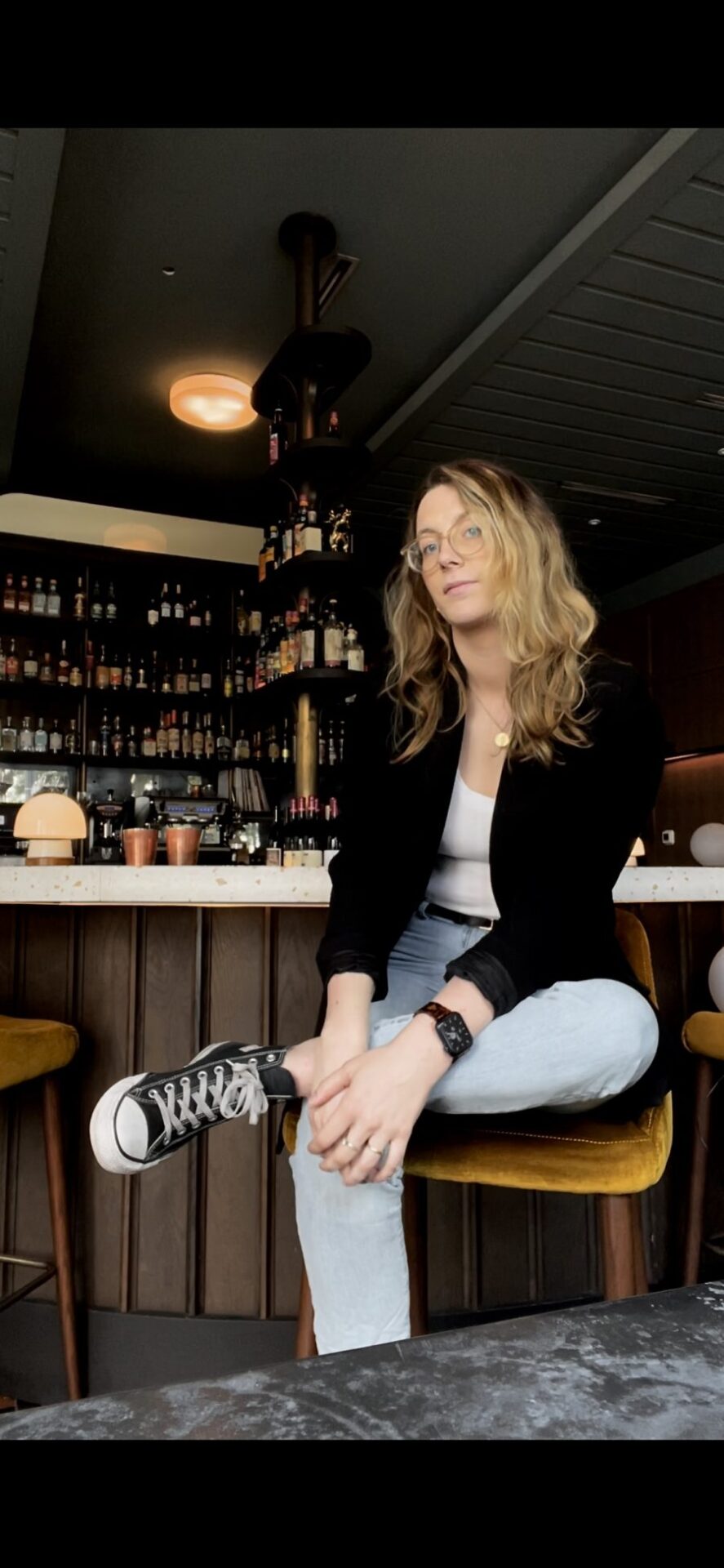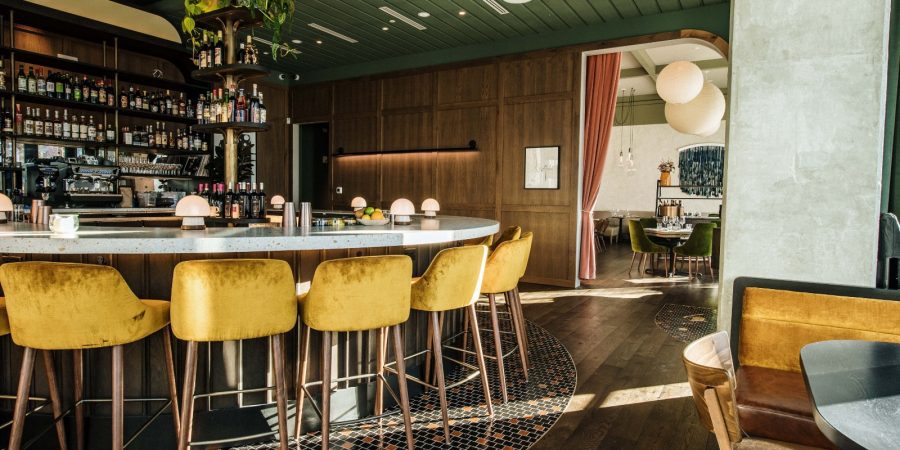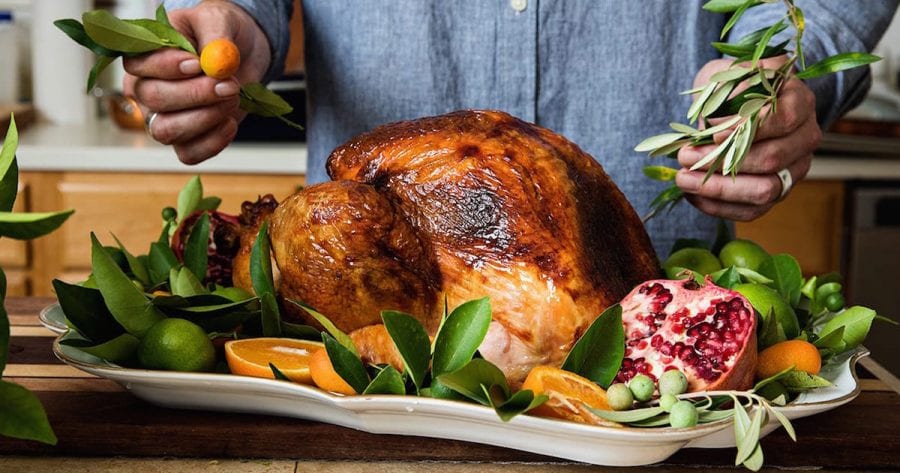
Funky, brett-y, and, increasingly so, bottled with pop art-like labels just to remind the drinker of their hip choice in wine. The characteristics of natural wine are almost like a metaphor that speaks to its counter-culture style. Long dismissed by wine professionals as generally flawed and unpolished, natural wines now populate restaurants’ wine lists and appear in almost any neighborhood wine store.
The style of winemaking that yields these products makes wine free of any additives. Most winemakers rely on additives to help control flavor and aroma and preserve wines to age well. Society’s growing preference for organic and minimally processed foods has people increasingly experimenting with natural wines.
To better understand the wine world’s underdog and how to incorporate it into our holiday festivities, we turned to Alex Brashears, the sommelier and wine director at Lyla Lila in Atlanta. The recently named one of the New York Times 50 restaurants to be excited about in 2021, Lyla Lila specializes in Italian cuisine, which approaches ingredients and dishes with little manipulation—similar to natty wines.
Shake your holiday wine list up from the traditional Beaujolais and prosecco. If you’re looking to introduce a bottle of natural wine into the mix for upcoming holiday festivities, Brashears offers advice on how to get started.
Talking Natural Wine with Alex Brashears
TLP: How did you first get into wine?
Alex Brashears: I fell into the world of restaurants and wine accidentally. When I moved back to Atlanta after college, I worked in a doctor’s office in the daytime and in restaurants at night. One day, I had a very clear realization that I felt infinitely better when I stepped into the restaurant than I did my day job.
Around the same time, the sommelier in the restaurant where I worked offered to pay for my Introductory Exam through the Court of Master Sommeliers. What followed next was a series of impulsive decisions. I quit my job in the medical field, transitioned full time into restaurants, and jumped head-first into the world of wine. Within a few months, I passed both the Introductory and Certified exams through the CMS, competed in numerous national wine competitions, and took over the beverage program for a prominent Atlanta restaurant.
Later, I was fortunate enough to join the wine team at Eleven Madison Park in New York City. There is something so indescribably wonderful about working on the floor of a bustling restaurant, and that feeling is why I feel like working in restaurants is truly my calling in life.

TLP: What brought you from New York City to Atlanta?
Alex Brashears: When the Covid-19 pandemic started, my entire world flipped upside down, seemingly overnight. I went from selling wine in a bustling, thriving, three-Michelin-starred restaurant in the heart of Manhattan to being holed up in a tiny apartment for months on end. I decided that I would take advantage of being under-employed and I moved out to California to work a wine harvest which was something I have always wanted to do but never been able to. Following the harvest, a friend put me in touch with [chef] Craig Richards at Lyla Lila. I accepted a job offer from him over the phone—without stepping foot into the restaurant or even meeting him in person.
I’m from Atlanta originally and have always known that I would return to Georgia one day, so everything lined up perfectly.

So natural wine: why is it becoming so popular?
Alex Brashears: The wine scene in the 1980s of the Loire Valley in France was the O.G. ‘natty wine’ community. A small handful of growers in the region really started championing this style of winemaking that was terroir-driven and required minimal intervention in the winemaking process. Since then, it’s really been gaining traction in places like Paris, New York, and San Francisco and moving into other cities across the United States.
I think that, in part, the natural wine movement has become increasingly popular in the United States because people are becoming increasingly interested in where their agricultural products are coming from and how those products are treated. It’s a counter-movement to the large industrialization practices that have been happening with agriculture for the last several decades.
TLP: Can natural wines be food friendly?
Alex Brashears: Absolutely! Our entire beverage program here at Lyla Lila really revolves around the idea that natural wine comes in all sorts of different styles and can be exceptionally food friendly. I would wager that I could find all manners of ‘traditional’ wine drinkers a natural substitute for their favorite bottle. There is no one-size-fits-all standard for natural wine, which means that there are endless wine pairing opportunities.
TLP: What sort of natural wines should we keep in our rotation for upcoming holiday celebrations?

To pair with fish, ham, roast beef, or turkey…
Alex Brashears: Generally speaking, lighter bodied, chillable reds are ideal to pair with dishes like roast fish, ham roast beef, or turkey. I personally gravitate towards syrah from the Northern Rhone Valley for my holiday meal pairings. It’s a classic pairing for the Thanksgiving table for good reason—they tend to drink peppery, savory, and have robust fruit and body while maintaining balance with alcohol and acidity.

TLP: What if we’re all about the side dishes?
Alex Brashears: I think versatility is key when pairing with sides. Think light, crisp whites or racy mineral-driven rosés.
Angelo Negro makes a really incredible unfiltered arneis from the Piedmont region of Italy. The wine is easy drinking, bright but has a lot of depth of toasted bready notes that seem perfect for Holiday pairings. Shake it up and incorporate the lees (spent yeast cells from the bottle of the wine) if you want the wine to taste a little funkier or keep the bottle upright and let the lees settle before you pour if you want a classically bright, fruitful wine. Plus, this wine is extremely affordable, so you don’t have to feel bad cracking a bottle open to enjoy while you’re cooking!
One of my favorite winter-time rosés (yes, you should drink rosé during the winter) is from Clos Cibonne. The Cuvee Tradition is a perfect pairing for anything you’d find at your holiday table. It’s lightly salty, mineral driven, and a seriously delicious wine.

And if we want to pop a bottle of natural bubbly?
Alex Brashears: Divella Gussago: The winemaker, Alessandra Gussago, is who I want to be when I grow up. Her wines are tensile, bold, and extraordinarily expressive. It drinks like grower-producer champagne, yet she’s located in the Lombardy region of Italy. I personally love the blanc de blancs with just about anything you’d find on a table but is particularly delicious with white meat and roasted vegetables.
Domaine Saint Cyr makes a pet-nat rose from Beaujolais that, if you can get your hands on it, is incredible with all types of holiday food. The wine is fresh, fruitful, and drinks like a celebration in a bottle. Gamay is another classic holiday food pairing, so adding bubbles into the equation really ups the wow factor, in my opinion.
Raventós i Blanc is another producer that drinks like Champagne, without the price associated with champagne. Their wines are fresh yet still serious and have incredible food-pairing. implications.
keep reading
Partnered
20+ Award-Winning Wineries On the Monticello Wine Trail in Charlottesville & Albemarle County, Virginia
Escape to the Monticello Wine Trail of Virginia Wine Country in Albemarle County and plot your visit to 21 award-winning wineries.
On the Road
What The Wine Pros Are Drinking This Fall
A handful of women shaping the landscape of southern wine tell us what perfect wine pairings and bottles they’re craving this fall.
At the Table
All the Way Rosés
To welcome the lingering evenings outside, we’re crushing on these five refreshing rosés. After all, who doesn’t want their drink to match the atmosphere?
share
trending content
-
New Restaurants in Arkansas
-
Shrimp and Grits: A History
by Erin Byers Murray -
Tea Cakes, A Brief History
by TLP Editors -
Gullah Geechee Home Cooking
by Erin Byers Murray -
A Cajun Christmas Menu
by TLP Editors
More From In the Field
-
From Pop-Up To Brick-and-Mortar | Listen
-
The Return of the Lynnhaven Oyster | Listen
-
What’s On the Horizon for 2024
-
Sorelle: La Dolce Vita in Vogue
-
Keya and Co. Turning Sadness into Sugar








